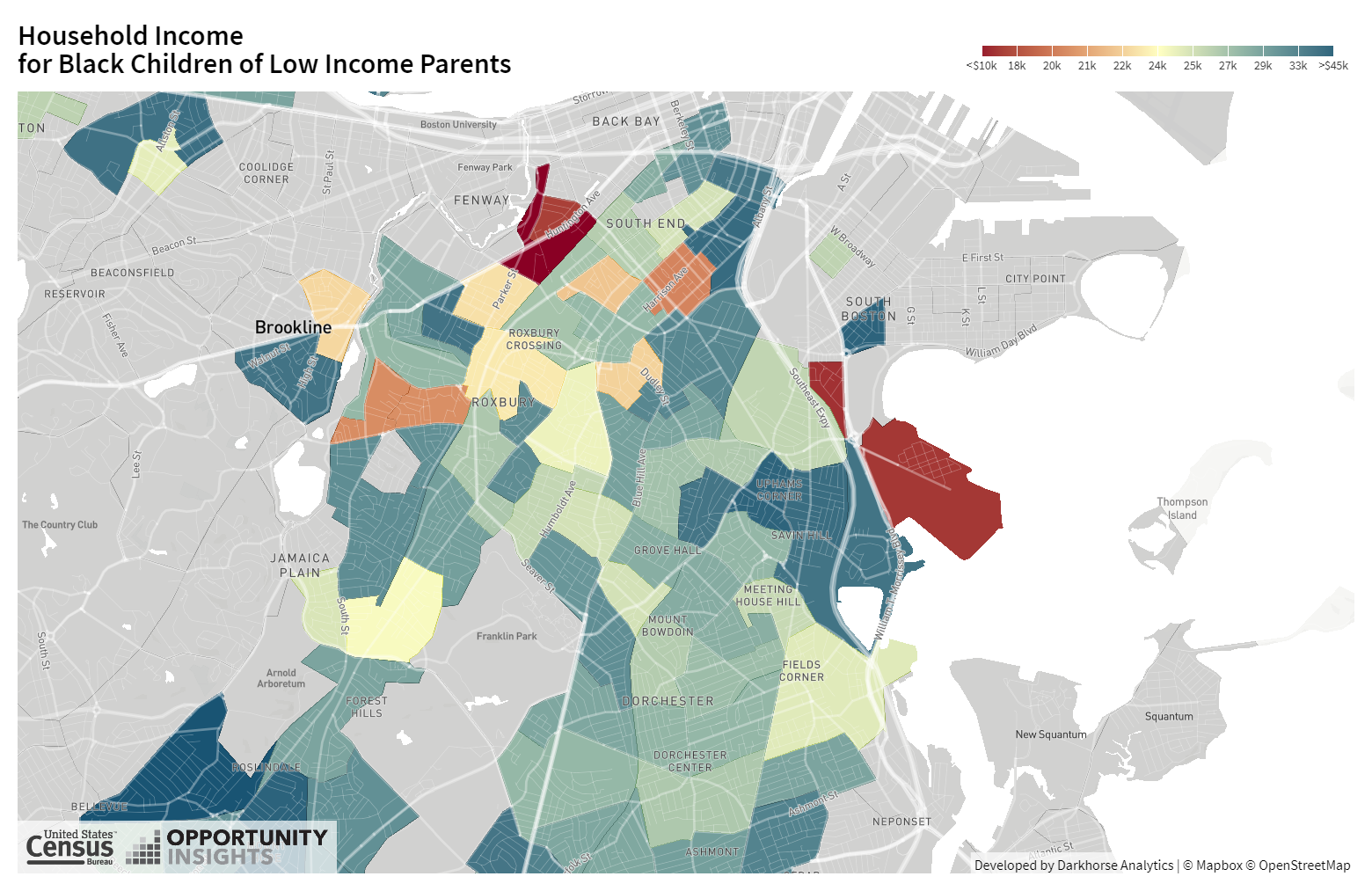Opportunity Insights co-director John Friedman presented the Opportunity Atlas at The Boston Foundation on October 10, 2018.
Friedman’s presentation featured a neighborhood-by-neighborhood analysis of the landscape for opportunity in Boston, a city which has enjoyed tremendous economic growth in recent years, but which still contends with severe economic inequality.
“Economic growth is great, but not the same thing as providing opportunity and setting children– especially from poor families– on the right trajectory to long-term success,” Friedman said.
While the Boston area has one of the highest rates of economic mobility in the country, many families, particularly in minority neighborhoods, have been left behind. Boston has much to celebrate – low incarceration rates and a high minimum wage, for instance – but equality of opportunity is constrained by segregation, high housing costs, a shrinking middle class, and a relatively high rate of income inequality. The result is a skyrocketing number of low-income households to match the city’s growth in high-income households.
Using the Atlas data visualization tool as a guide, Friedman explained that locally tailored approaches to improving outcomes for low-income children may hold the most promise for lifting more people out of poverty over time.
Savin Hill in Dorchester is one of the best neighborhoods in the country for low-income African-American children, Friedman explained.

Children from that demographic who move to Savin Hill from the nearby but less opportunity-rich neighborhood of Roxbury Crossing in Dorchester as 2-year-olds earn an average adult income of $38,000 annually. But every year these children spend in Roxbury Crossing before moving to Savin Hill, leads to a steady decrease in adult earnings. Childhood neighborhoods, Friedman concluded, impact adult economic success; what is perhaps most striking here is that Roxbury Crossing and Savin Hill are separated by only 2.8 miles and share many similarities on paper. The challenge is in determining what accounts for the marked difference in outcomes between the two places despite these similarities.

The event marked the latest Boston Indicators report,”Boston Is Booming… but for Whom?“
The report’s central premise is that Boston’s middle class has been “hollowed out” because the benefits of the region’s booming economy are not being shared equally. Friedman used that thesis to explain how an opportunity lens on economic opportunity can offer critical nuance for policymakers and civic stakeholders seeking to increase economic mobility, particularly for low-income minority families.
Additional Information:
Video of October 10, 2018 #SharedProsperity Full Event at The Boston Foundation
Boston Globe October 10, 2018: “In Boston, the middle class is shrinking, and it’s harder to get ahead than it used to be” By Katie Johnston